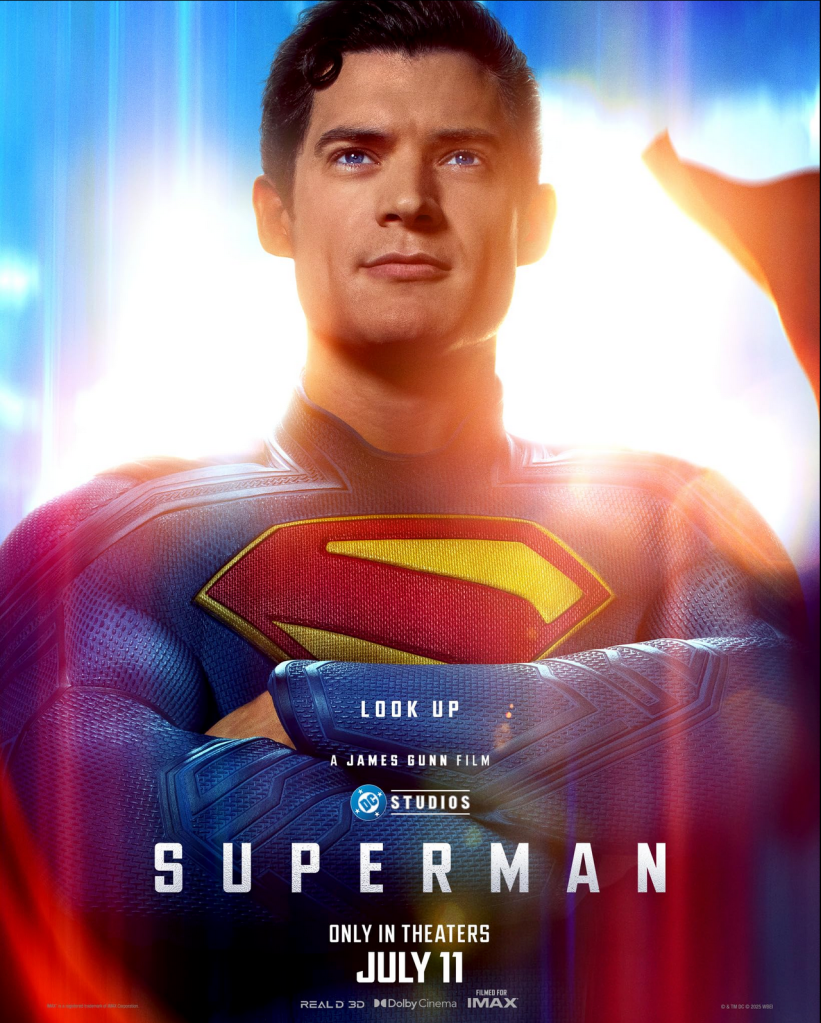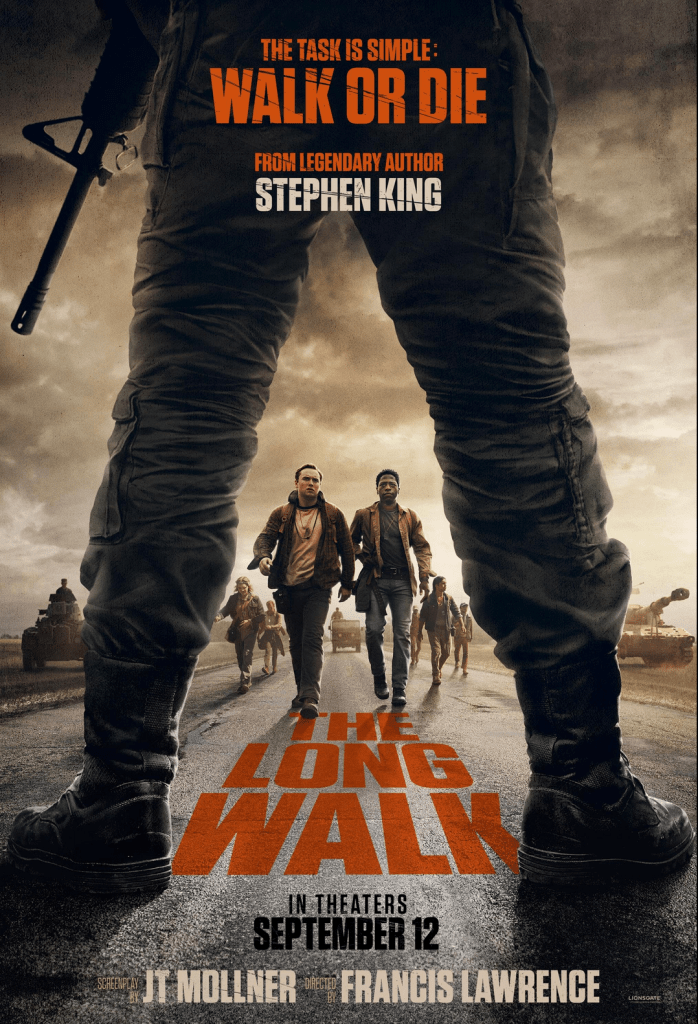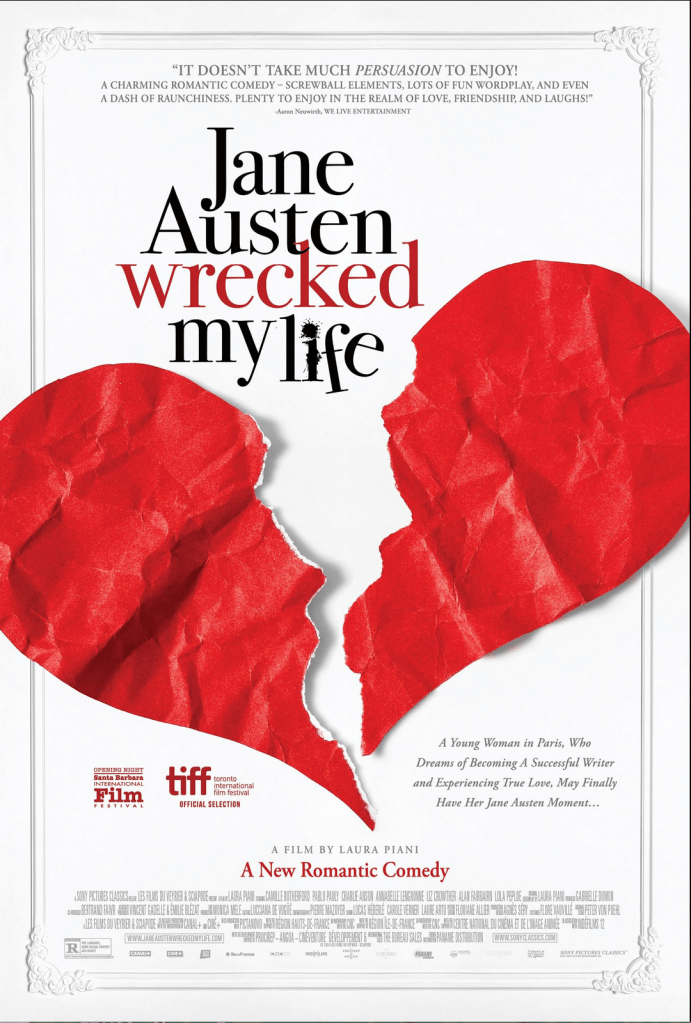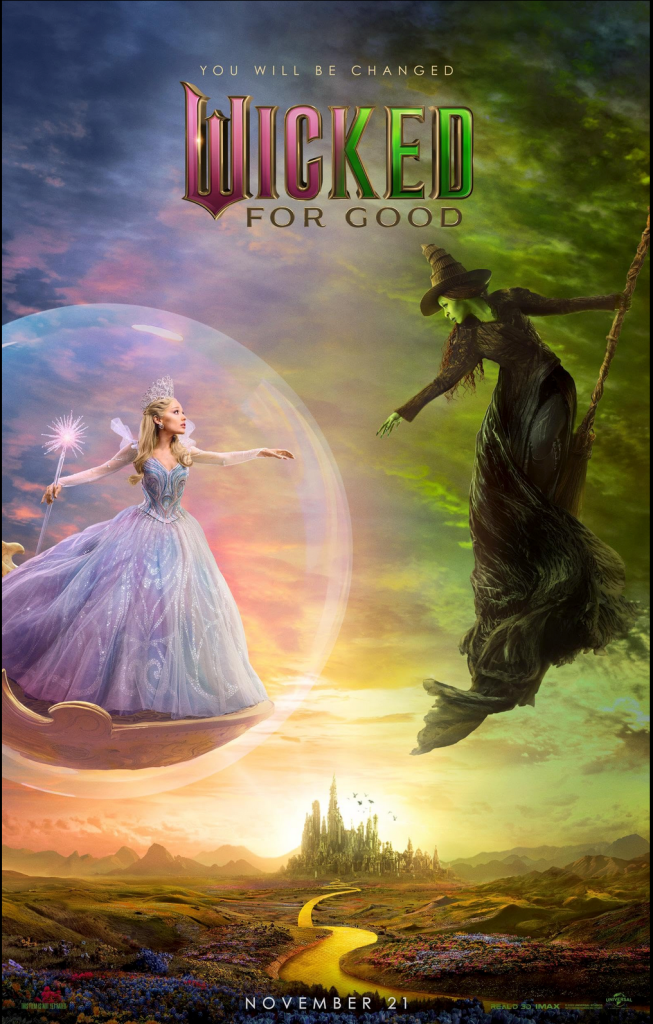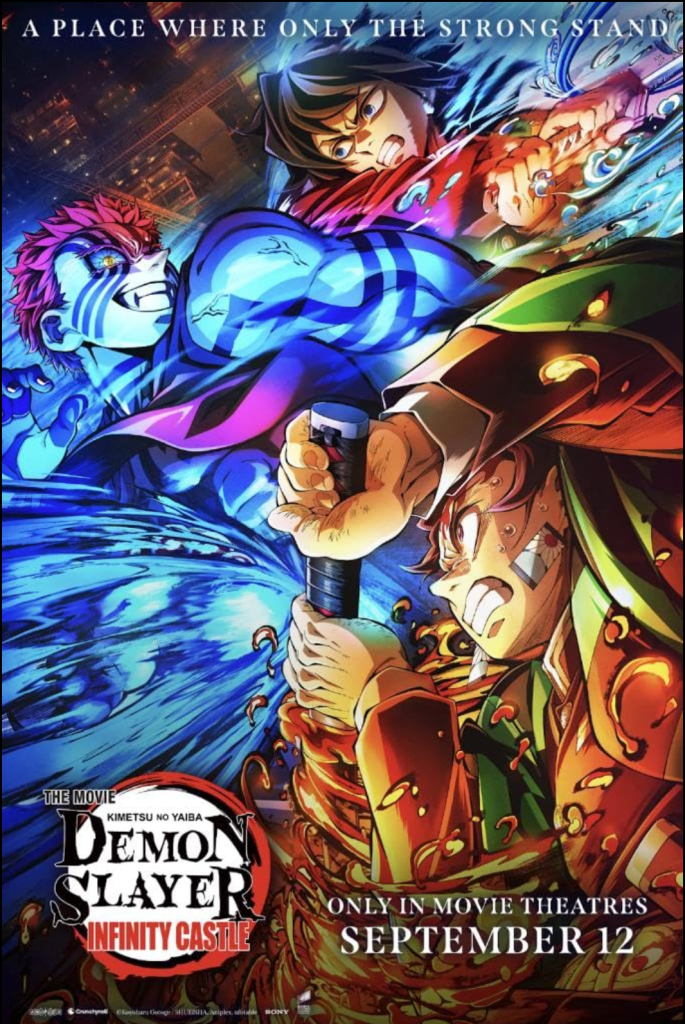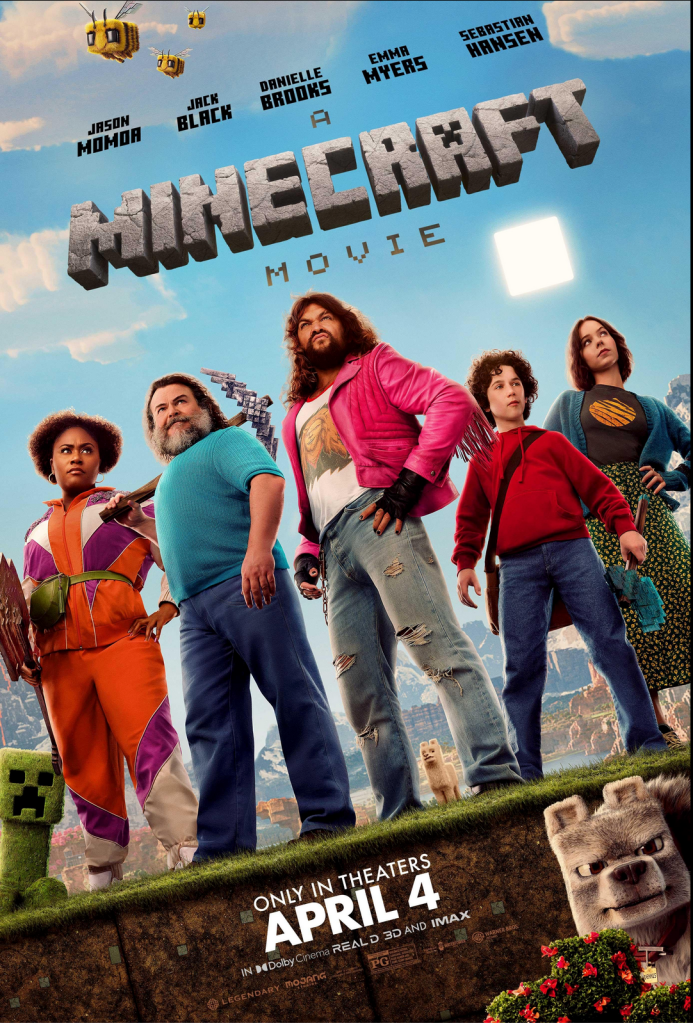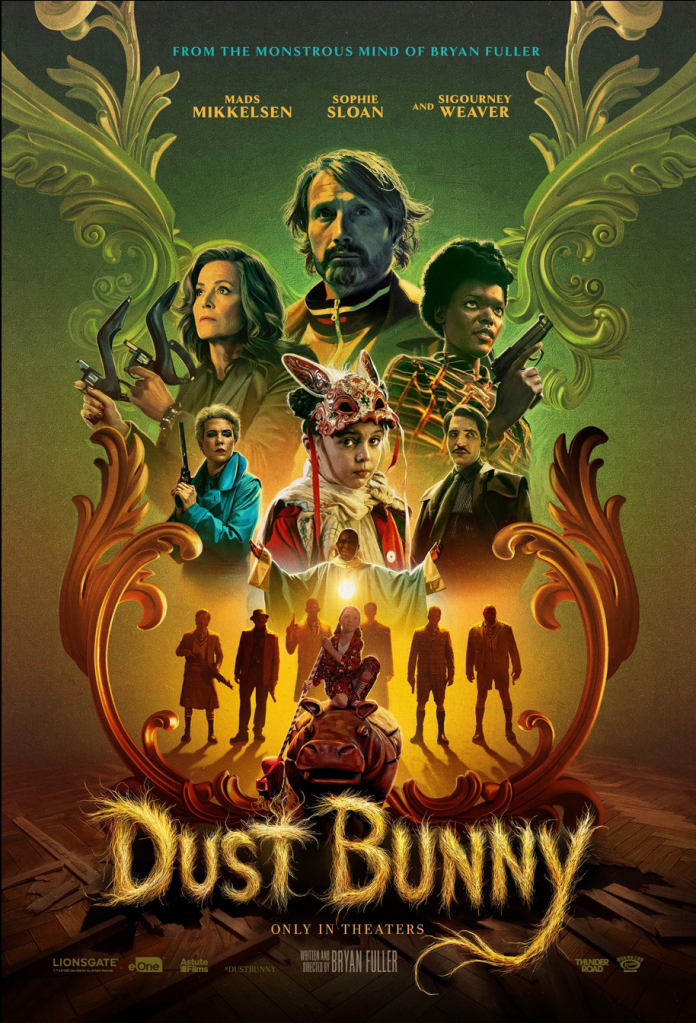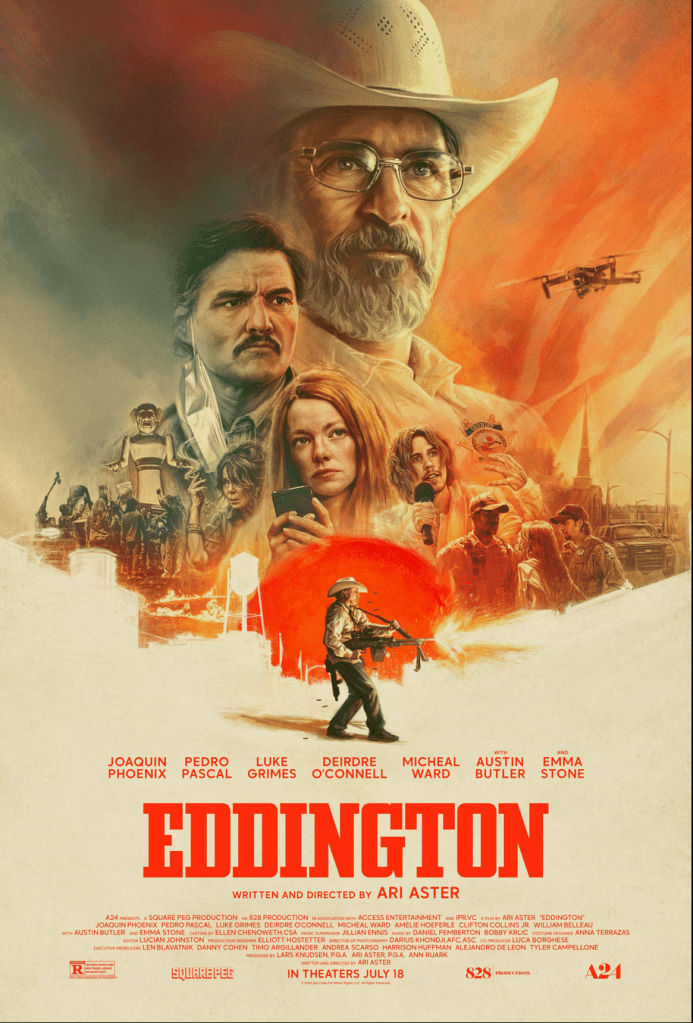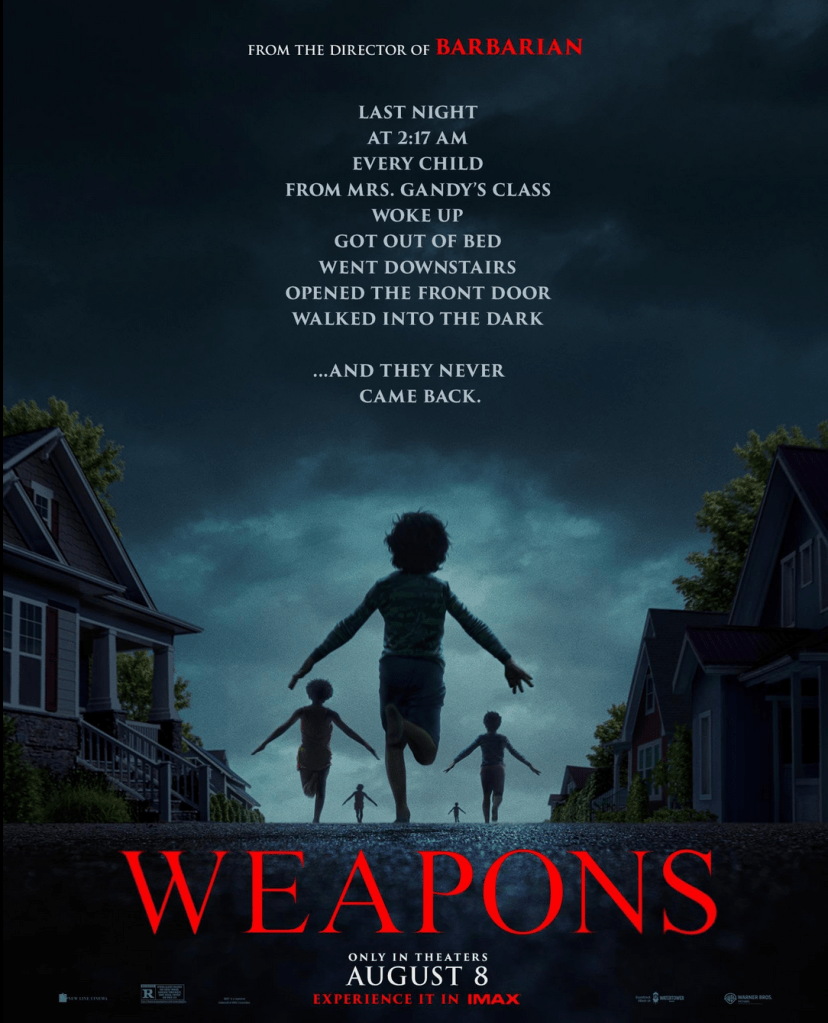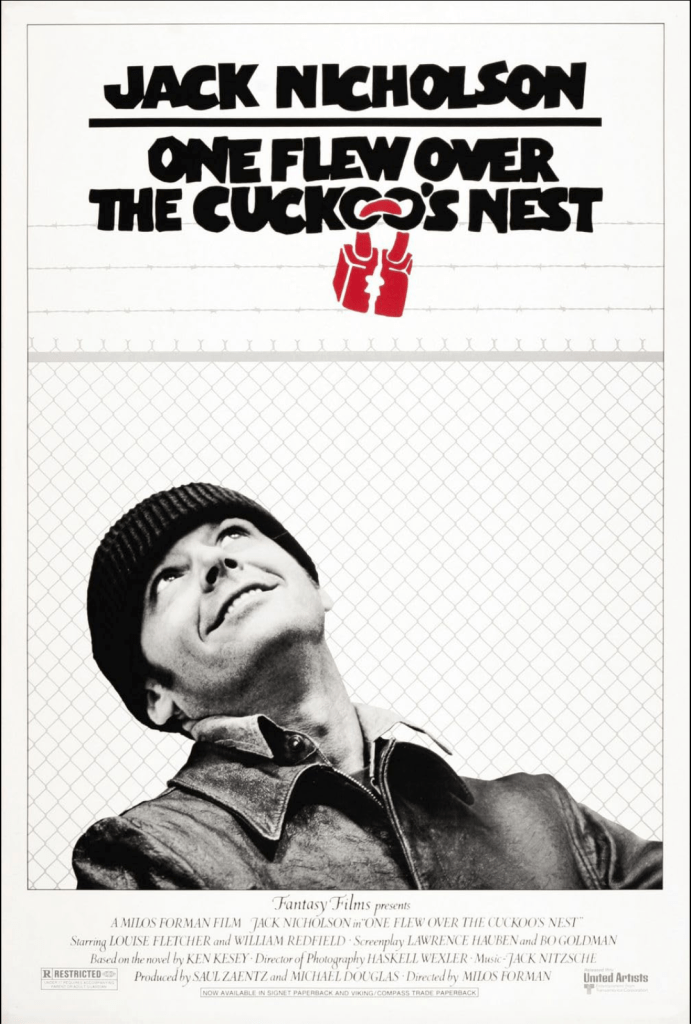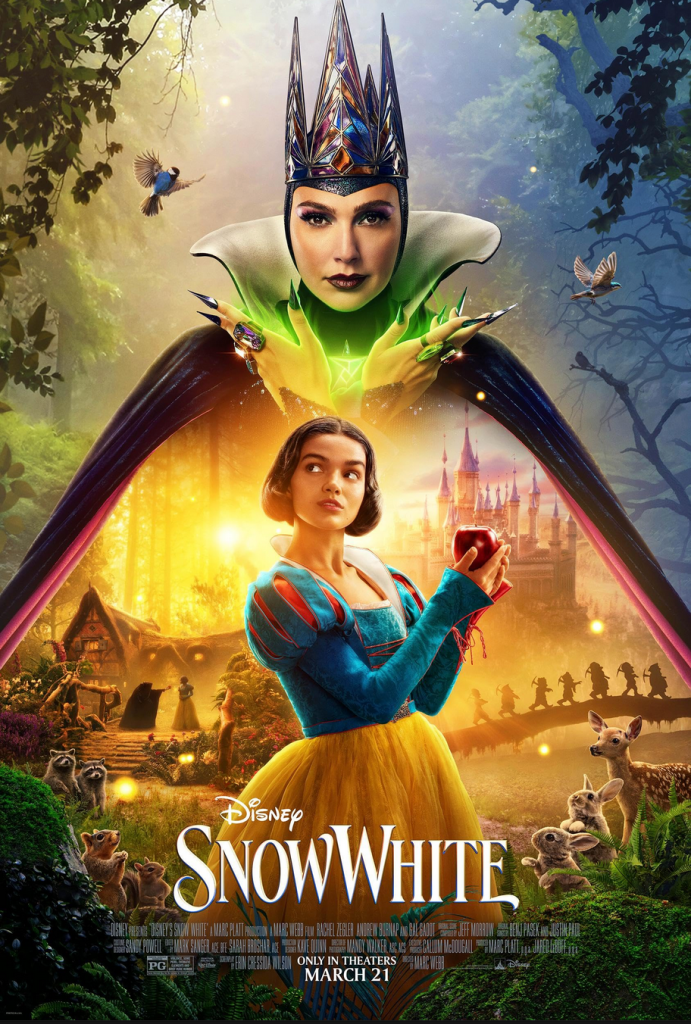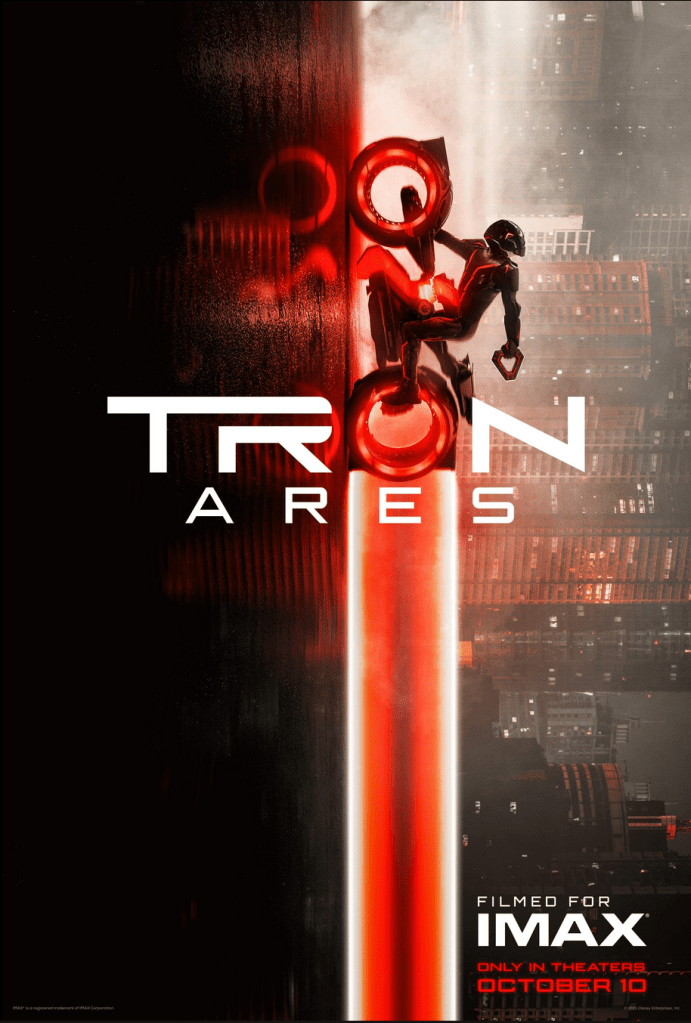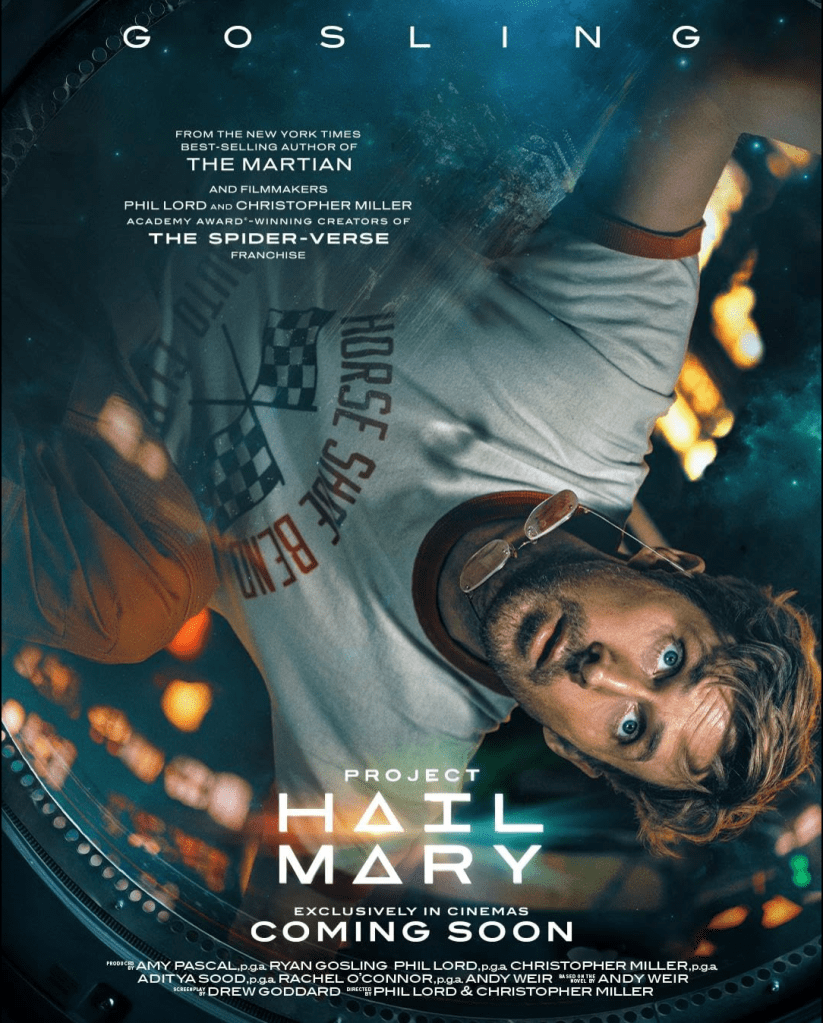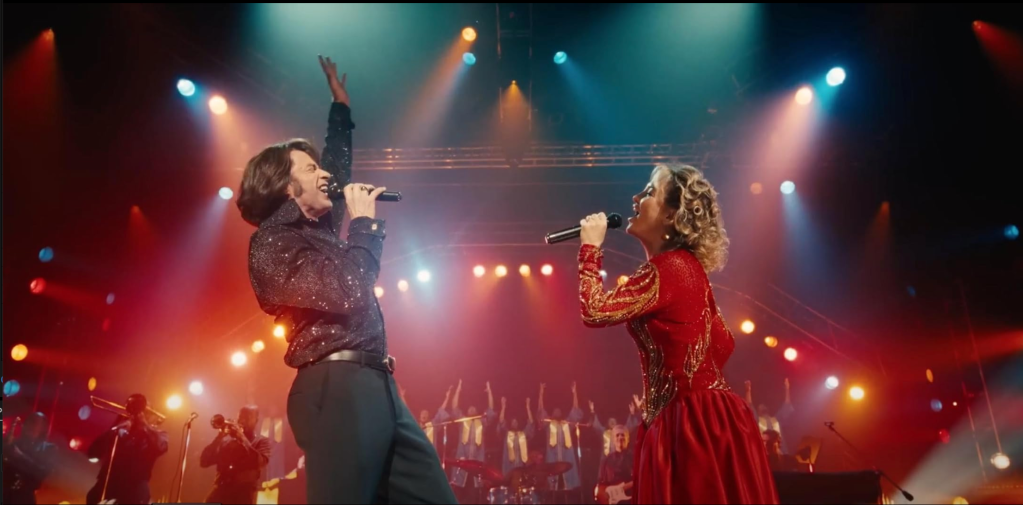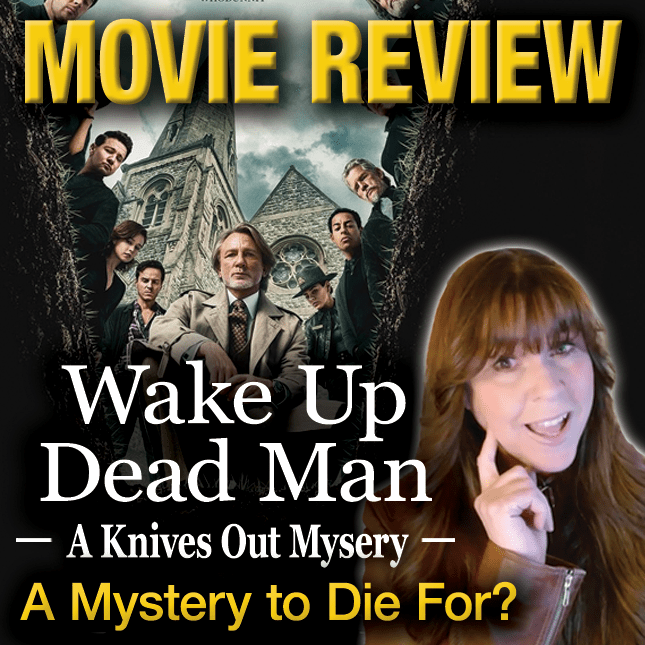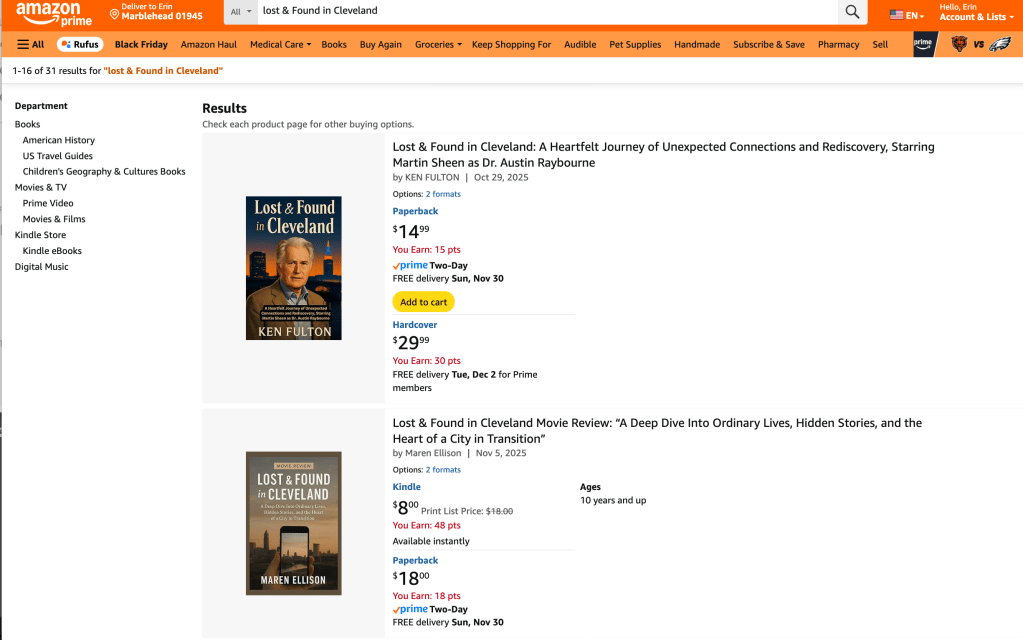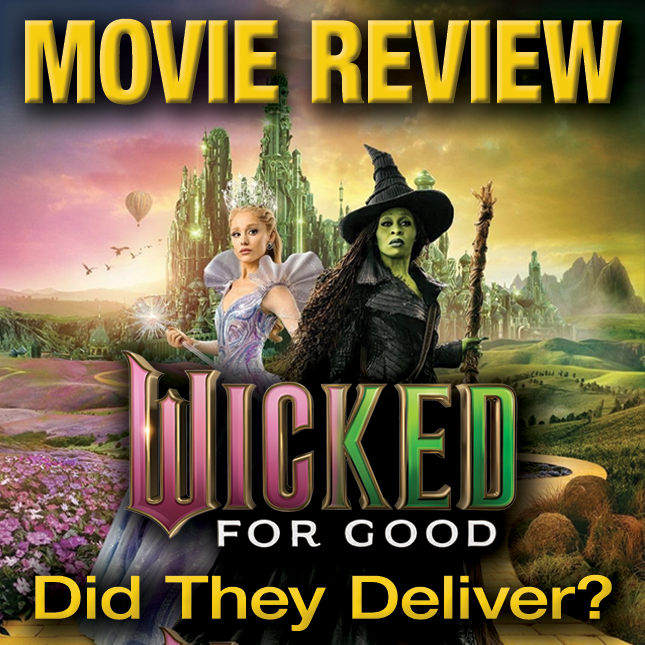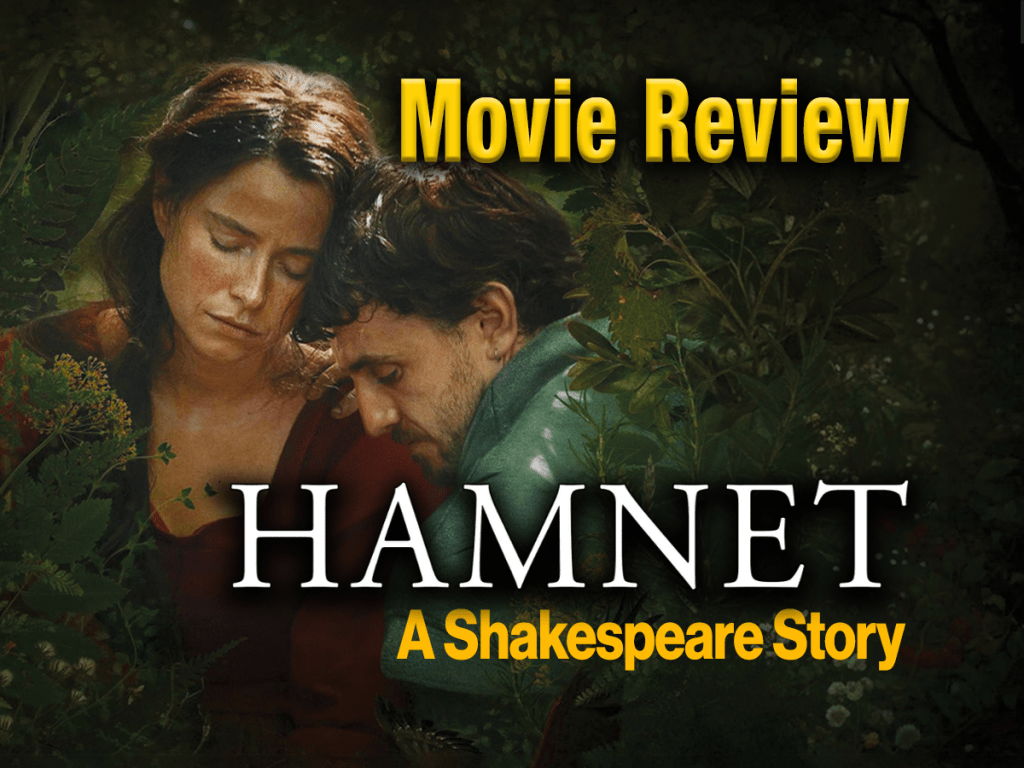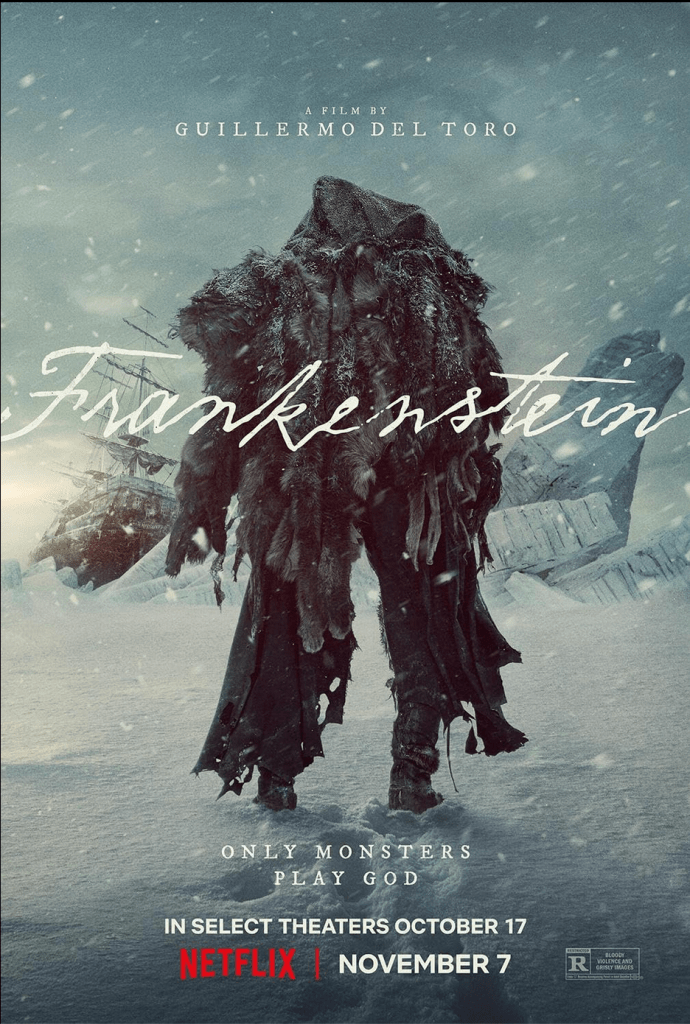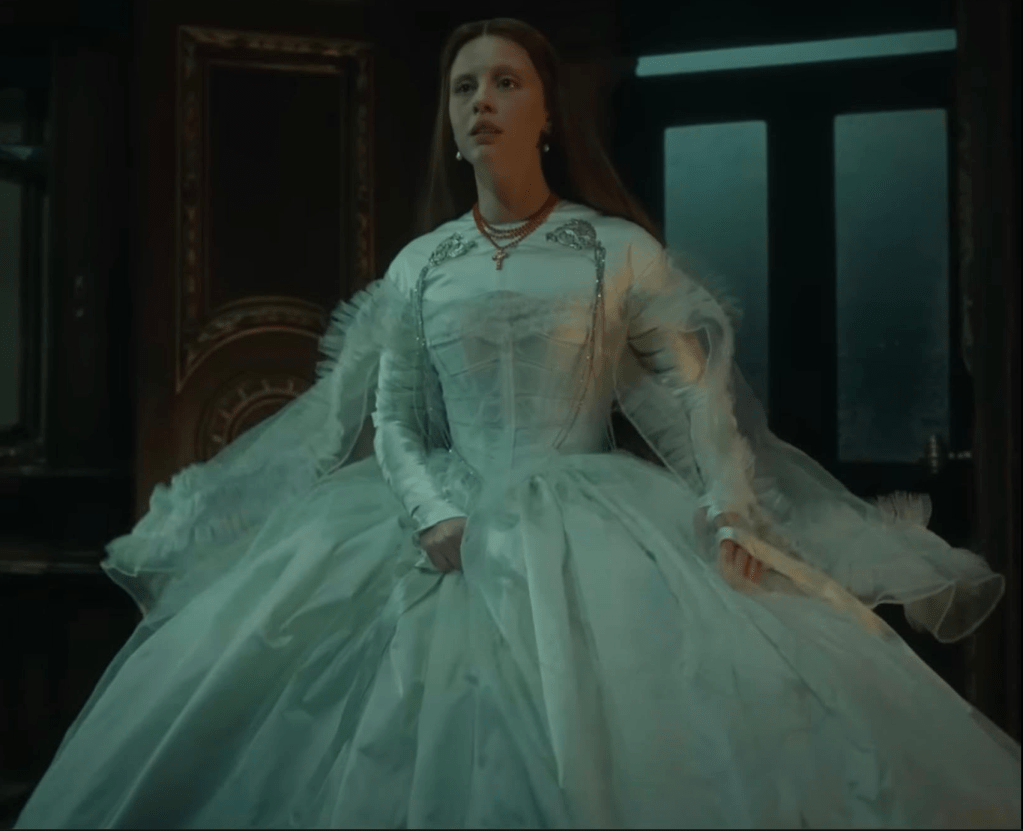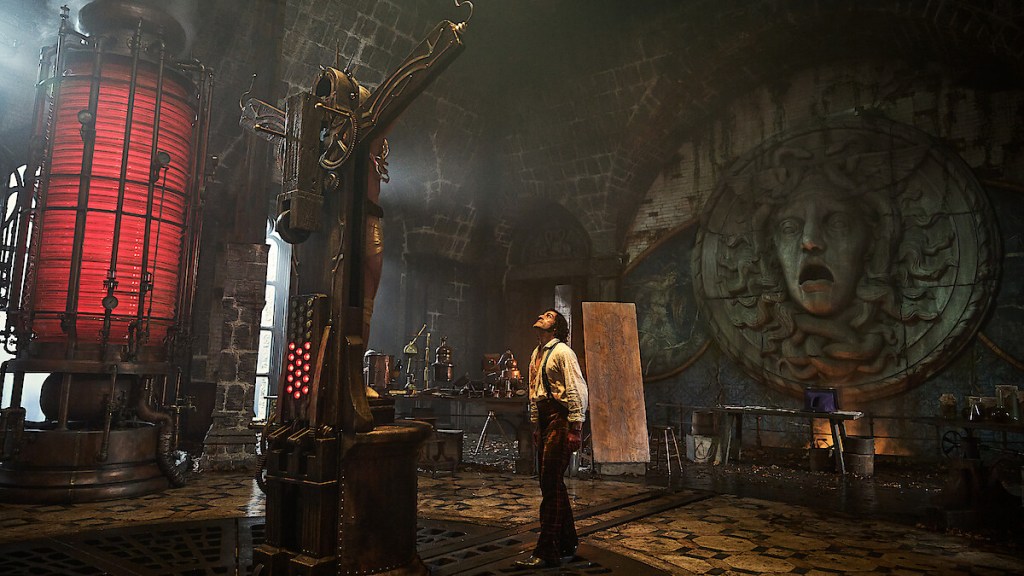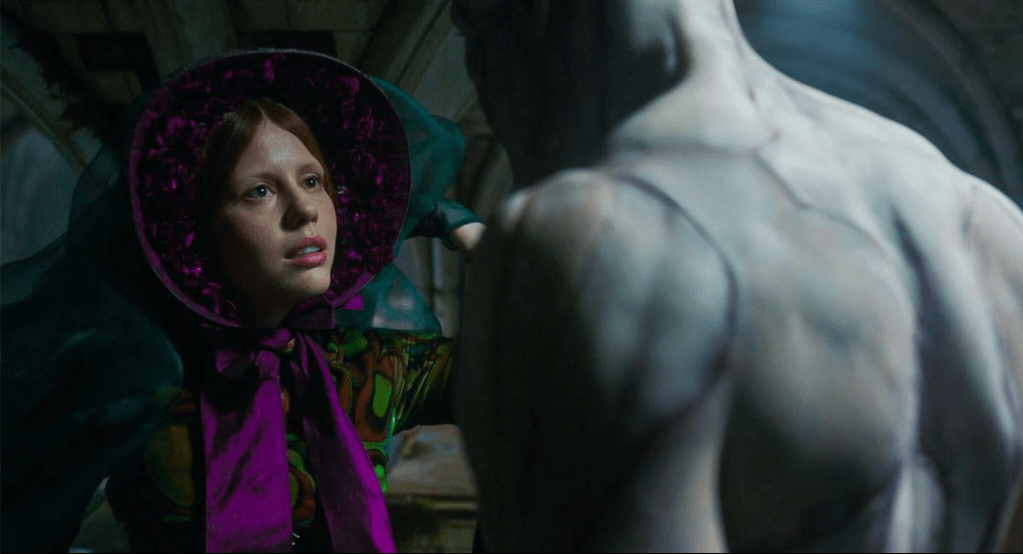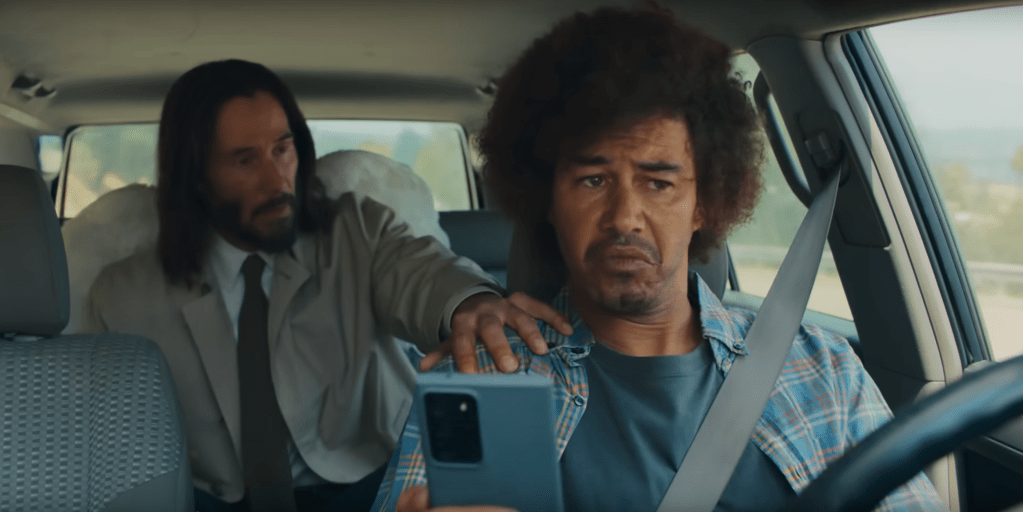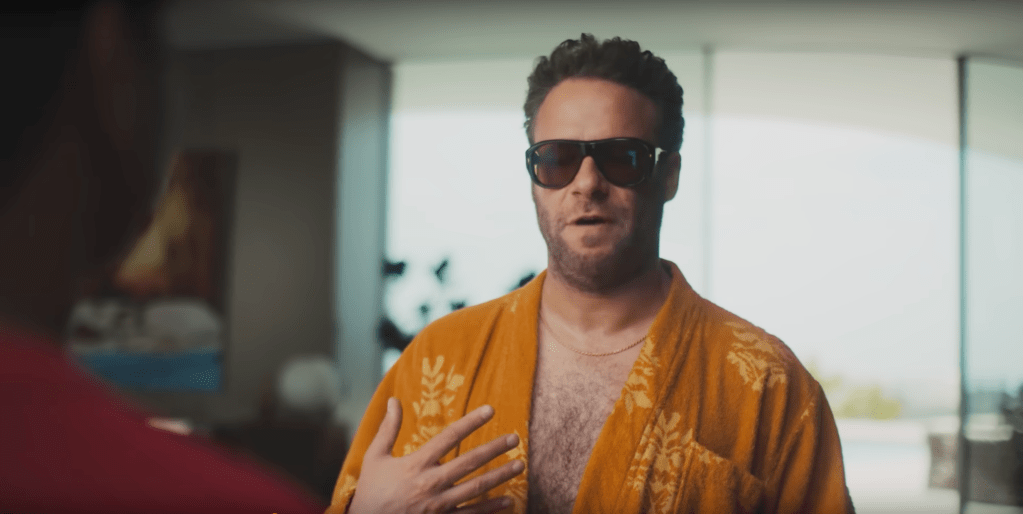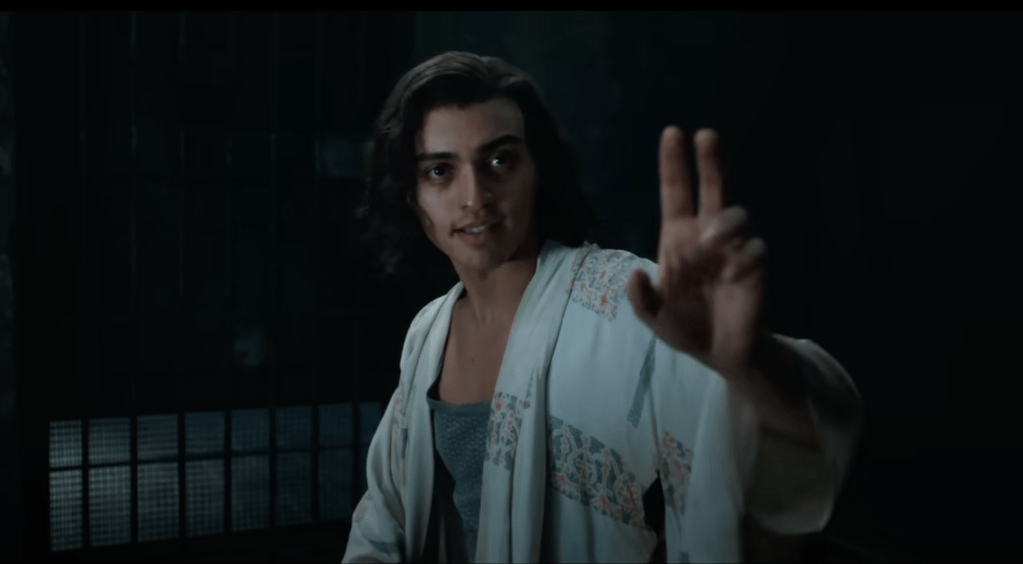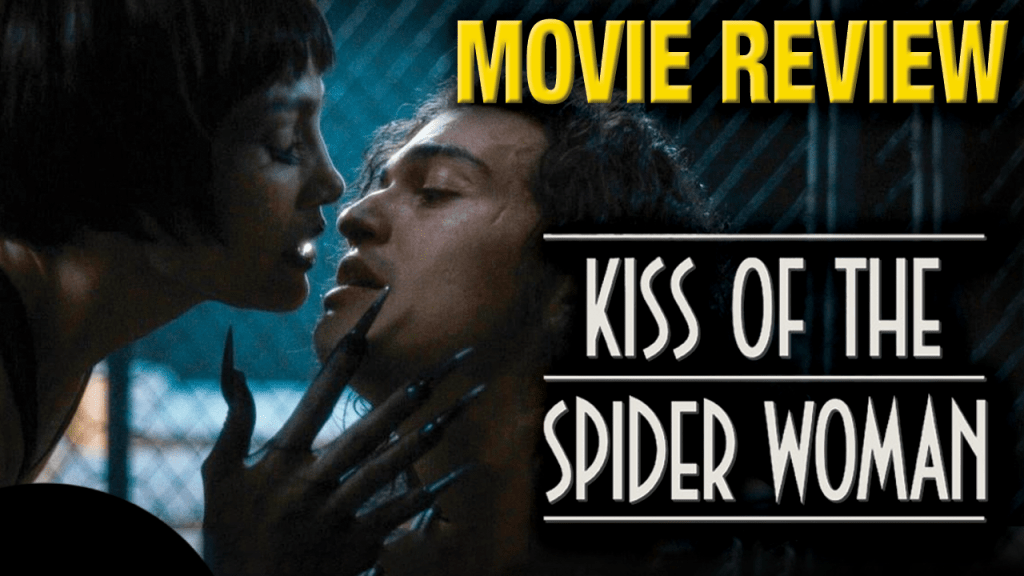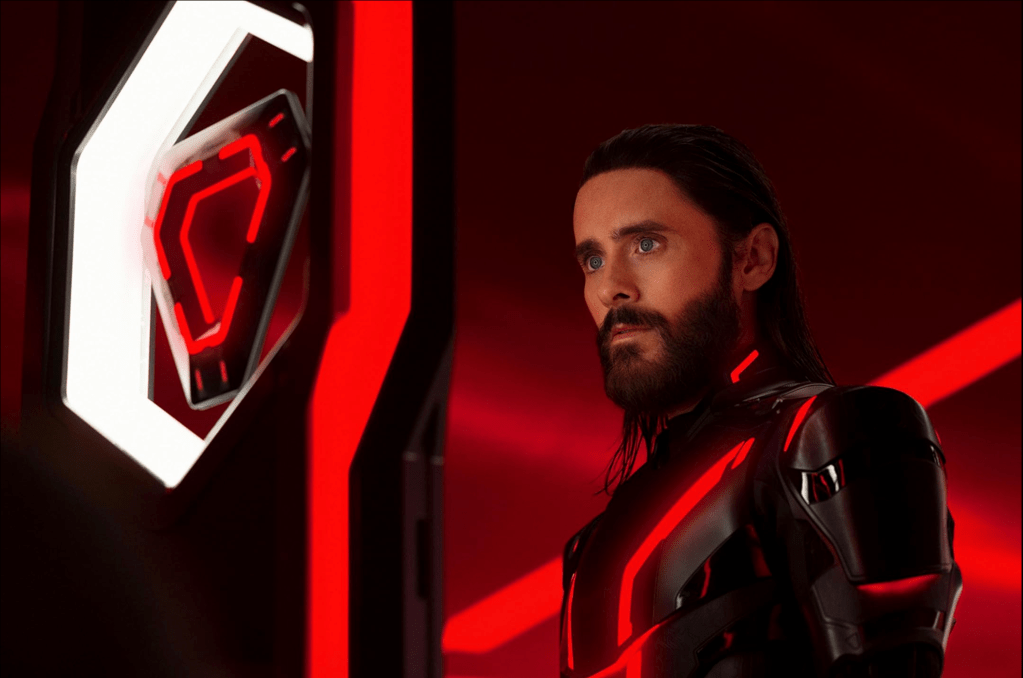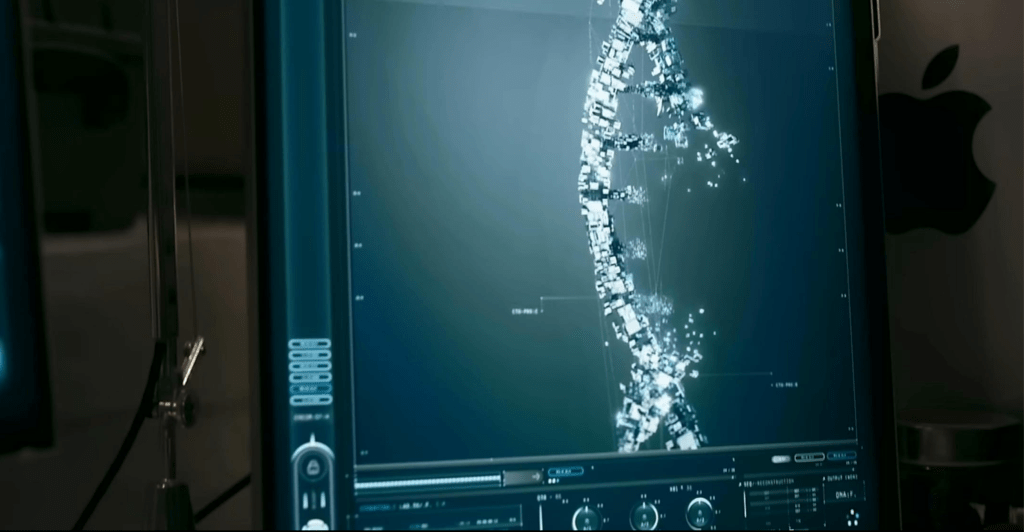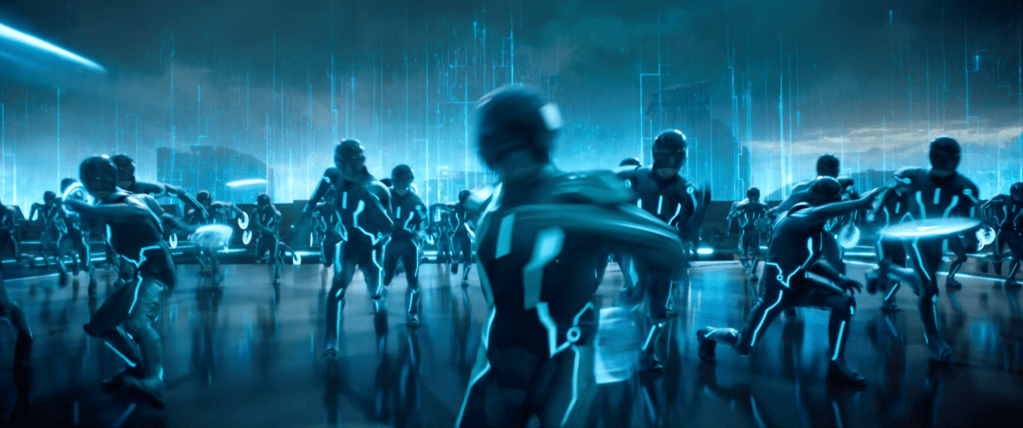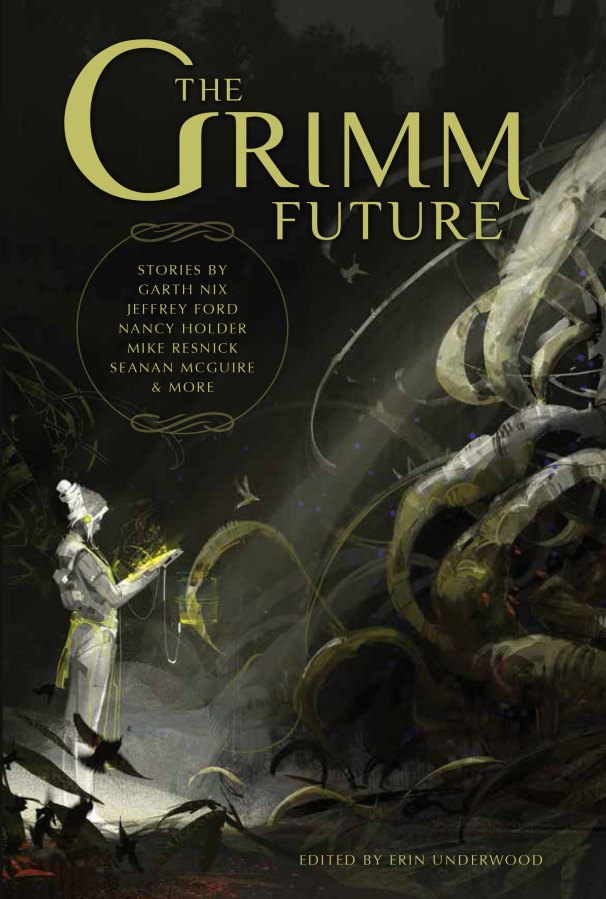At the end of every year, we always see the same top five or the top ten lists. These are the movies everyone agrees you’re supposed to like, or hate, or at least pretend you don’t like while secretly watching them alone in a darkened theater. I’m so tired of those lists.
I didn’t want to do that kind of list this year because 2025 wasn’t that kind of film year.
It was a big year for movies, but not in the way box office headlines might lead us to believe. Instead of asking which films were the “best,” I think the more interesting question is:
What kind of year was 2025 for movies?
So, I’m breaking down this year’s films into patterns and themes, looking at what worked, what didn’t, and how audiences responded to the movies that studios gave theatrical releases to in 2025. And, honestly, I think they really did try everything!
You can read the review below or watch the video review on YouTube:
A Theatrical Return to Story-First Movies
For the better part of the last decade, it felt like theatrical releases were built backwards. What I mean by that is so many of them were designed around the dazzling technology and jaw dropping scenes that we could point to as a “million dollar moment” that would turn these films into box office successes … at the expense of story, character, and structure.
While we see some of this in 2025, things have finally started changed as the shine wears thin with audiences choosing films that embraced the story-first principle over spectacle.
A lot of movies fit into this category, but a few stand out like Superman, which was the most anticipated films of the year, and while it was a success (at least on paper), it received mixed reviews from audiences and critics. However, I think it represented a return to a more wholesome Superman character, which made this film stand out for me, even if there were some scripting problems.
Mission: Impossible – The Final Reckoning may not have fully lived up to our expectations (especially not mine), but it reminded audiences why the theatrical experience matters. You could feel everyone in the room leaning forward to see what Tom Cruise was going to do next, and while the story floundered a bit, those Cruise-ian stunts still count for something.
Then there was F1, which was a film that I didn’t know I needed, but I was so happy to get! It was fast, confident, and well-acted. When the Formula 1 engines roared and the plot pushed forward, F1 proved why it needed to be seen on a big screen.
And, no matter how predictable the script was for Avatar: Fire and Ash, James Cameron proved yet again that he understands something fundamental about experiential filmmaking. Some stories are meant to be seen, heard, and felt in the theater. Avatar is one of those films and it uses the art of visual immersion as part of its storytelling, not a substitute for it.
Jurassic World: Rebirth, The Fantastic Four: First Steps, and 28 Years Later were all enjoyable to varying degrees, but they also divided audiences by sacrificing their story for spectacle so that the movie was more in line with their studios’ franchise expectations. Then there were the 2025 surprises like Weapons, Good Boy, and Sinners, which came out of nowhere to flip our expectations upside down by just showing us what a well told story could do on screen.
Studios are still working on figuring this stuff out, and the lessons learned in 2025 will be seen on screens over the next few years since it takes a few years to produce new films. So, patience really is a virtue for this category.
Films discussed in this section: (+) ticket; (-) skip it
- Avatar: Fire and Ash +
- 28 Years Later
- Bugonia
- Caught Stealing +
- Die My Love
- F1 +
- Frankenstein +
- Good Boy +
- Jurassic World: Rebirth
- Marty Supreme
- Mickey 17
- Mission: Impossible – The Final Reckoning
- Nuremberg +
- One Battle After Another
- Predator: Badlands –
- Sinners +
- Superman +
- The Fantastic Four: First Steps
- The Housemaid
- The Life of Chuck
- The Long Walk +
- The Smashing Machine
- Warfare
- Weapons +
Horror Reclaims the Big Screen
It’s fair to say we witnessed a genuine horror renaissance as the genre reclaimed the big screen in 2025. It was striking how many horror films were released, and how consistently they showed up from original films to reboots, sequels, prestige projects, major studio releases, indie productions, and more. Horror was a theatrical pillar this year, and I think this might be the first year that horror had such an important impact on the industry as a whole.
While other genres, struggled to connect with audiences, horror came through in a pinch. These films were disturbing and deeply human, even if many of them fell back on old tropes and story lines that we have seen before. Still, some of the most interesting and creative storytelling of the year came from movies like Sinners, with its old west setting and some all new (and realistic) vampire lore. Sinners turned out to be both a great horror film and one of the strongest stories of the year.
Weapons was another great film that literally surprised everyone! It’s characters and conflict were so strangely believable and creepy that I literally left the theater texting friends that they had to see this film because we haven’t seen anything like this before.
The Long Walk brought us into a very dark alternate future for a dystopian, coming-of-age story wrapped in survival horror. The film Good Boy took an entirely different approach, telling its story from a dog’s perspective. And, of course, Guillermo del Toro’s Frankenstein stands apart as a major achievement for 2025. This is a filmmaker who understands adaptation, mood, and character at the deepest level and knows how to pull conflict out of every nook and cranny of a story. Netflix was smart to give it a theatrical release because Frankenstein absolutely deserved its big screen debut.
By proving itself as one of the most reliable genres in 2025, horror succeeded in giving us some of the most exciting and original ideas of the year.
Films discussed in this section: (+) ticket; (-) skip it
- 28 Years Later
- Abraham’s Boys: A Dracula Story –
- Anaconda –
- Death of a Unicorn
- Dust Bunny +
- Five Nights at Freddy’s 2
- Good Boy +
- Guillermo del Toro’s Frankenstein +
- I Know What You Did Last Summer –
- Killing Faith
- Megan 2.0
- Predator: Badlands –
- Shelby Oaks
- Silent Night, Deadly Night –
- Sinners +
- The Conjuring: Last Rites
- The Crow –
- The Home
- The Long Walk +
- The Monkey
- The Shrouds –
- The Strangers: Chapter 2 –
- The Surfer
- The Thing with Feathers
- The Toxic Avenger –
- The Wolfman
- Together
- Weapons +
The Return of Straight-Up Comedy
For a while, it felt like comedy disappeared from theaters. As comedies from studios thinned out and mid-budget originals faded, humor increasingly got folded into action movies as if that was a good solution. 2025 didn’t fix all of that nonsense, but it did show signs of a real shift back to producing comedy films.
2025 wasn’t interesting because comedy suddenly dominated the box office. 2025 was interesting because studios started taking chances again on traditional comedies that were willing to be a little rude and poke fun at ourselves in uncomfortable ways in order to expose some uncomfortable truths.
Films like The Naked Gun leaned fully into that idea and it didn’t need to apologize for being silly or bold. It understood the assignment of what an adult comedy needed to be and the creative team trusted that audiences would meet them halfway. Freakier Friday tapped into a similar impulse, blending nostalgia with the continuation of the story from the last film. Neither script was particularly unique, but after such a long absence of funny films in the theater, they both felt fairly fresh.
Then there were smaller, more character-driven comedies like Splitsville and Good Fortune, which didn’t rely on spectacle or franchise familiarity. These films worked because they focused on chemistry and timing, along with some unexpected situations that felt both familiar and absurd.
What’s notable here is that comedy didn’t return with a bang! Instead, studios were cautious. They tested the waters with a few well-chosen stories instead of diving in headfirst, and Liam Neeson’s PSAs leading up to the release of The Naked Gun were part of that strategy. So, while we didn’t get a comedy boom, we did get some good stories to laugh at together.
Films discussed in this section: (+) ticket; (-) skip it
- The Naked Gun
- Bride Hard
- Freakier Friday
- Honey Don’t –
- Love Hurts
- Splitsville
- Good Fortune +
- Fackham Hall
- The Roses +
- Spinal Tap II: The End Continues
Romance Found Its Way Back to the Big Screen
Over the last few years, romance was treated like it no longer belonged in theaters. Instead, these films were pretty much directed to streaming or absorbed into other genres (just like comedy!). The idea that audiences would show up just for a love story became something studios seemed increasingly unsure about. However, 2025 challenged that assumption, too! We didn’t get a flood of sweeping romances or glossy rom-coms that would have been a better fit for the Hallmark Channel. What we got were contemporary relationships that felt like adult situations that avoided trend-chasing and formulaic setups.
Films like Materialists and Jane Austen Wrecked My Life leaned into character and conversation. These weren’t high-concept crowd-pleasers designed to dominate the box office. They were films that asked audiences to connect with the characters emotionally, to listen to their problems, and to sit with some complicated feelings because (yeah!) love is complicated.
The Roses was a remake that tried to untangle a messy but intense marriage between two people who were escalating their relationship to absurd levels. Then there is Hamnet, which gave us the marriage of William Shakespeare, and Song Sung Blue, which brought us a deeply touching love story between two musicians who loved playing Neil Diamond’s music together. What I loved about these films is that they never once paused to apologize for being too emotionally, and they didn’t try to disguise romance as something else to sell these stories. I think this is an important point to make for these movies since romance has always been one of the most human genres in cinema.
This handful of films reminded us that emotional intimacy is still a compelling reason to buy a movie ticket.
Films discussed in this section: (+) ticket; (-) skip it
- A Big Bold Beautiful Journey
- Die My Love
- Eternity
- Hamnet +
- Jane Austen Wrecked My Life
- Love Hurts
- Love Me
- Materialists –
- Song Sung Blue +
- The Roses +
- The Threesome
- You, Me, & Her
Musical Films as a New Theatrical Strategy
Music has become one of the clearest examples of studios thinking intentionally about why a film might belong in a movie theater. In 2025, music-driven releases transitioned from niche experiments (aka Taylor Swift’s Era Tour Movie) to being deliberately positioned as theatrical events that included categories like concert films, musical biopics, and stage-to-screen adaptations. When studios leaned into how music could fill these small spaces, musicals became less about the medium and more about experience.
The rise of concert films is the most obvious example of how this worked because they aren’t pretending to be traditional narratives. They are theatrical events from Björk to Miley Cyrus and even Pink Floyd at Pompeii, which was filmed in 1971 and shot as a concert film that found its way back into theaters this year. These films gave audiences a concert experience for the price of a movie ticket and a sound system that made it worth the price.
Musical biopics took a more traditional approached to the theatrical question with films like A Complete Unknown that invited us into Bob Dylan’s early career and Song Sung Blue that gave us a look into the lives of two Neil Diamond tribute band musicians. These kinds of films centered on the people behind the music as well as when they were on stage performing.
Then there were the stage-to-screen releases, which doesn’t feel like that much of an “obvious” shift for 2025. As a prime example, Wicked: For Good was absolutely designed for the big screen, whether you think it should have been one or two films. Everything about it, from the music to the choreography, production design, and the incredible VFX all worked together for a true movie theater experience.
What unites all three of these approaches is confidence. These films don’t hedge their bets. Instead, they lean into the music and the drama to justify their place on the big screen. 2025 didn’t prove that every musical would be a hit, but it did show that when studios commit fully to projects that understand their core audience, musical films can become genuine theatrical events..
Films discussed in this section: (+) ticket ; (-) skip it
Concert Films:
- Björk: Cornucopia
- Depeche Mode: M
- Imagine Dragons: Live from the Hollywood Bowl
- Kygo: Back at the Bowl
- Mary J. Blige: For My Fans, Live from Madison Square Garden
- Miley Cyrus: Something Beautiful
- Mitski: The Land
- Pink Floyd: Live at Pompeii
- Prince: Sign o’ the Times
Musical Biopics / Music-Centered Narrative Films
- A Complete Unknown +
- Becoming Led Zeppelin
- Bono: Stories of Surrender
- Song Sung Blue +
- Spinal Tap II: The End Continues – (I’m adding this here because I don’t think there is a better place to capture this one.)
- Springsteen: Deliver Me From Nowhere
Stage-to-Screen / Musical Adaptations
- Hamilton: An American Musical
- Kiss of the Spider Woman
- Wicked: For Good +
Expanding Animation’s Theatrical Footprint
Like music focused films, animation increased its presence in theaters, not just in terms of the number of film, but in the ambition that they brought to their productions. These aren’t just regular ol’ cartoons. What stood out this year was how broadly animation showed up across the global theatrical system in films that are unmistakably animated as well as in films that blur the line between animation, visual effects, and live performance.
To make sense of what’s happening, it helps to think about animation in two distinct categories.
First, there’s traditional animation. These are films where animation is the storytelling engine, using fully animated worlds, voice-driven performances, and distinct artistic visual styles. This category continued to prove that animated storytelling isn’t confined to a single audience or genre. We saw the return of several big animation IPs, including The Smurfs Movie and Zootopia 2. However, the animated film that took the world by storm was Ne Zha 2, which showed just how far modern digital artists can turn imagination into detailed, lifelike animated worlds.
Second, there’s what I think of as animation-adjacent filmmaking. These are movies built almost entirely through CGI environments, with digital characters and performance capture technology that relies on human actors and live-action production. Movies like Avatar: Fire and Ash, and A Minecraft Movie sit squarely in this space. They’re not animated in the traditional sense, but they are fundamentally digital creations that depend on digitally constructed worlds to function.
Whether stylized or photo-real, animated or animation-adjacent, these larger-than-life films are designed to be seen and heard in a theater in ways that are diminished outside the theater.
What 2025 made clear is that animation is no longer just a children’s medium, especially with releases like Demon Slayer: Kimetsu no Yaiba – Infinity Castle and Chainsaw Man – The Reze Arc. Animation has grown up and now covers a spectrum of approaches to storytelling. I think this proves that point that when studios respect the range and design that these kinds of films can offer they can also become story-first films rather than feature film length cartoons.
Films discussed in this section: (+) ticket; (-) skip it
Traditional Animation:
- Arco
- Chainsaw Man – The Reze Arc +
- David
- Demon Slayer: Kimetsu no Yaiba – Infinity Castle +
- Dog Man
- Elio
- Jujutsu Kaisen: The Execution Arc +
- Ne Zha 2 +
- Nobody
- Stitch Head
- The Bad Guys 2
- The King of Kings
- The Smurfs Movie
- The SpongeBob Movie: Search for SquarePants
- Zootopia 2
Animation-Adjacent:
- A Minecraft Movie
- Avatar: Fire and Ash +
Kids Came Back to the Theater
Over the last five years, streaming has become the default for family viewing, especially as ticket prices and concessions sky rocketed. (It costs me almost $20 for a popcorn and soda at my local theater nowadays! Add in a box of Milk Duds and that’s nearly another $7.) As a result, we are seeing parents grow more selective about which films are worth the time, cost, and logistics of packing everyone into the car for a family trip to the theater.
What worked this year to get kids back into the theater wasn’t “more movies!,” it was producing movies that parents trusted to deliver a complete experience, with a well-told story that their kids would enjoy. If they could enjoy it, too, that was a bonus.
Films like A Minecraft Movie, Zootopia 2, The SpongeBob Movie: Search for SquarePants, and Smurfs felt like known quantities that kids would enjoy. At the same time, original stories with little to no name recognition struggled, but proved that originality can still break through with younger audiences. Dust Bunny, despite its limited release and near lack of marketing, worked as a crossover film for both kids and adults because it understood both audiences and didn’t talk down to either one.
There were some big hits for studios, but there were definitely a few really big films that missed the mark for kids. So, while 2025 didn’t fully restore family movie going to pre-pandemic levels, it did show that when studios respect both kids and adults, theatrical releases aimed at younger audiences can still work.
Films discussed in this section: (+) ticket; (-) skip it
- David
- Dog Man
- Dust Bunny +
- Elio
- Gabby’s Dollhouse: The Movie
- How to Train Your Dragon
- Kayara
- Lilo & Stitch +
- Paddington in Peru +
- Snow White –
- Sonic the Hedgehog 3
- The Bad Guys 2
- The Day the Earth Blew Up: A Looney Tunes Movie
- The King of Kings
- The Legend of Ochi
- A Minecraft Movie
- Smurfs
- The SpongeBob Movie: Search for SquarePants
- Zootopia 2
The Rise of Independent Studios
One of the clearest patterns to emerge in 2025 was the growing importance of independent and mid-tier studios in shaping the theatrical landscape. While major studios continued to chase franchises in hopes of opening-weekend dominance, many of the films that generated the best buzz came from companies operating outside the traditional blockbuster machinery.
Independent studios weren’t trying to be everything to everyone. Instead, they were selective in choosing good stories that they could produce on a budget. They took risks that they could realistically manage, and they trusted their creative teams. In a year where theatrical confidence still felt a bit fragile, that restraint became a bedrock of theatrical filmmaking.
Films like The Surfer, Eddington, Bugonia, and Shelby Oaks didn’t arrive with the weight of global expectations or billion-dollar benchmarks. Instead, indie studios seemed to collectively position their choices around stories that put character development first and then added in flavors of odd curiosities and other elements that were flat-out strange.
Studios like A24, Neon, Focus Features, and a growing ecosystem of smaller studios and distributors seemed to excel in 2025 in ways that allowed them to expand upward to grab some of that space that used to belong to mid-budget studio films. That space hasn’t disappeared entirely, but it has shifted. These companies are now carrying much of the responsibility for theatrical originality, even as budgets remain tighter and margins thinner. In fact, almost all of my favorite movies of the year are in this category including Dust Bunny, Hamnet, Black Bag, Sinners, and Weapons.
If you are looking for good movies that challenge you and don’t serve up the same story lines over and over, check out some of 2025’s indie films. This is where the gold medal goes for cinematic creativity.
Films discussed in this section: (+) ticket; (-) skip it
This section includes films released by independent studios as well as filmmaker-driven projects that originated outside the franchise system but were distributed by major studios.
- Abraham’s Boys: A Dracula Story (RLJE Films/Shudder) –
- After the Hunt (Focus Features) –
- Anemone (Focus Features)
- Black Bag (Focus Features) +
- Blue Moon (Sony Pictures Classics) +
- Bring Her Back (A24)
- Bugonia (Focus Features)
- Death of a Unicorn (A24)
- Die My Love (MUBI)
- Dust Bunny (A24) +
- Eddington (A24)
- Eden (Vertical Entertainment) +
- Eleanor the Great (IFC Films)
- Hamnet (Searchlight Pictures) +
- I’m Still Here (Altitude Films)
- Marty Supreme (A24)
- One Battle After Another (Warner Bros.)
- Shelby Oaks (Neon)
- Sinners (Warner Bros., distribution) +
- The Home (Roadside Attractions)
- The Last Showgirl (Roadside Attractions) +
- The Legend of Ochi (A24)
- The Life of Chuck (Neon)
- The Phoenician Scheme (Focus Features)
- The Shrouds (Sideshow/Janus Films) –
- The Surfer (Roadside Attractions/Lionsgate)
- The Testament of Ann Lee (Searchlight Pictures)
- Train Dreams (Black Bear)
- Weapons (Warner Bros) +
International Cinema Broke Through in a Big Way
For me, one of the most encouraging developments this year was how international cinema moved into the theater for more mainstream US audience members. There were a lot of international films this year, but I’m only listing the ones that I have seen.
I took a chance on Ne Zha 2 and loved it. That got me into both Demon Slayer and Chainsaw Man which I now love. There were several other films worth noting but I think Parthenope is probably worth a mention because it was like watching a metaphorical poem on screen.
These weren’t just Hollywood productions set abroad, but films with stories that were shaped by distinct cultures that reached new audiences in new ways. What I loved about these films is that they brought a new sensibility to storytelling that we have been lacking in the U.S.
I think the biggest takeaway here for U.S. studios is that international cinema isn’t a separate lane running alongside Hollywood. It’s part of the same theatrical ecosystem, influencing global and domestic tastes while raising our expectations for what great storytelling can include beyond the things we normally watch on the big screen.
Films discussed in this section: (+) ticket ; (-) skip it
- Chainsaw Man – The Reze Arc +
- David
- Demon Slayer: Kimetsu no Yaiba: Infinity Castle +
- Fackham Hall
- I’m Still Here
- Ne Zha 2 +
- Parthenope
- Sentimental Value
- Train Dreams
Franchise Fatigue, Reboots, and Expanding IPs
The wave of sequels, reboots, remakes, spin-offs, and expansions of existing story worlds felt more like a year at the track with all of the studio executives strategically placing bets on their horses in the hope that “this one” will be the blockbuster they need. Taken individually, some of these films worked. Taken together, 2025 left us feeling like someone slipped us a Mickey and stole our wallets.
Franchise fatigue is a real thing, and it’s less about audiences being tired of familiar worlds and more about oversaturation. With over 30 films that were tied to existing IPs, it’s absolutely shocking that the most original feeling stories were Downton Abbey: The Grand Finale and Wake Up Dead Man: A Knives Out Mystery. With Downton Abbey we got a warm and bittersweet goodbye film that felt like a love letter to fans and with Wake Up Dead Man we got brought back to church for a come to Jesus moment for Benoit Blanc. But let’s face it, Jurassic World: Rebirth can give us the same story over and over, and we are still going to show up for the dinosaurs. Right?
It’s important to remember that franchise familiarity isn’t enough to make a blockbuster today. Studios have to treat these familiar characters like an old friend who is always getting into trouble, but we still keep showing up for him in the hopes that he will get his act together. The truth is, we will keep showing up because hope is eternal and there is nothing we love more than a great story told by an old friend.
For that reason alone, 2025 felt like the year of eternal hope. As we ring in the new year, I know that we will do the same thing in 2026 with all eyes pinned on Marvel’s release of Doomsday as we go into the theaters with our fingers crossed, hoping that it will be good.
Films discussed in this section: (+) ticket; (-) skip it
- A Minecraft Movie
- Anaconda
- Avatar: Fire and Ash +
- Captain America: Brave New World
- Downton Abbey: The Grand Finale +
- Fantastic Four: First Steps
- Five Nights at Freddy’s 2
- From the World of John Wick: Ballerina +
- How to Train Your Dragon
- I Know What You Did Last Summer –
- Jurassic World: Rebirth
- Karate Kid: Legends
- Lilo & Stitch +
- M2GAN 2.0
- Mission: Impossible – The Final Reckoning
- Now You See Me: Now You Don’t +
- Silent Night, Deadly Night –
- Smurfs
- Snow White –
- Sonic the Hedgehog 3
- Spinal Tap II: The End Continues
- Superman +
- The Bad Guys 2
- The Conjuring: Last Rites
- The Crow –
- The Running Man +
- The SpongeBob Movie: Search for SquarePants
- Thunderbolts
- TRON: Ares
- Wake up Dead Man: A Knives Out Mystery +
- Zootopia 2
The Disappearing Mid-Budget Film
One of the most consequential shifts in 2025 was what wasn’t in theaters. What I’m talking about is the mid-budget theatrical films, which used to anchor adult movie-going, but this rare breed of film continued to feel scarce this year. These films are the ones that serve as the connective tissue between the indies and the big blockbusters, but with nearly three dozen hopeful blockbusters on 2025’s roster, those budget-breaking behemoths ended up sucking up all of the air and most of the studio’s production money.
What’s interesting about the thinning of this field is that these films don’t need a huge opening weekend to make money, and they don’t rely on existing IPs to drag people to the theaters. When mid-budget films did make it to theaters in 2025, they often resonated with audiences more than their big-budget big brothers precisely because they felt different.
Films like The Amateur and Black Bag, which were two of my favorite films of the year, didn’t ask audiences to do homework to understand the story or promise five more installments before we finally got to the end. Instead, they offered complete stories with clear beginnings, middles, and ends. The thing these films were missing was a noticeable marketing campaign. However, I did see more marketing for Eternity and Rental Family, two films I was really looking forward to seeing in the theater, but they were in and out so quickly that I nearly missed them. They were both fantastic and sweet stories that left an emotional mark.
What this section ultimately highlights is a growing gap, which is where I think next year’s films will find their biggest opportunities for growth. The question is, will the film industry take a chance on these kinds of films in 2026?
Films discussed in this section: (+) ticket; (-) skip it
- After the Hunt –
- Black Bag +
- Drop
- Eternity
- Good Fortune +
- Old Guy
- Rental Family +
- Shadow Force –
- The Amateur +
- The Home
- The Surfer
- The Thing with Feathers
- The Threesome
- Train Dreams
Familiar Faces Stopped Feeling Special
This was the year when familiar faces started to lose some of their power to draw audiences into theaters. As studios grew more cautious about risk, they seemed to treat star power an insurance policy for box office results. However, the shift in ticket sales wasn’t because the actors weren’t talented and weren’t a draw. I think it was because they were literally in multiple films that were timed too closely together.
If you look at release schedules, you can see how studios clustered their film releases, with smaller studios attaching their movies to release dates for big-budget films that featured the same actor. In theory, it makes sense but audiences felt the pressure of oversaturated actors with each new trailer, often resulting in star fatigue.
Pedro Pascal, in particular, seemed to be everywhere all at once with five films with theatrical release dates in 2025 (including Materialists, Eddington, and The Fantastic Four) plus the third season of The Last of Us on top of doing four films in 2024, and the promotions that we are already seeing for his two big films in 2026, Star Wars: The Mandalorian and Grogu and Avengers: Doomsday. It’s literally too much for an audience to bear even if you like Pedro because his performances began to blur in our minds, especially since he generally looked the same visually in every film.
Timothée Chalamet struck a more balanced note, delivering strong work in films like A Complete Unknown and Marty Supreme, which had release dates that were spread out over many months. Sydney Sweeney offered a counterpoint to both Pascal and Chalamet. Despite her films coming out closely together, in addition to her viral jeans moment, her performances in Americana, Eden, Christy, and The Housemaid felt distinct in tone and character. She may not be the most dynamic actress, but she proved that she is a very good character actor who isn’t afraid to look the part.
The takeaway from 2025 is that while star power still matters, either the studios or the actors themselves need to think more strategically about how their characters are going to play for an audience if multiple films are released in a short period of time. I think the one real exception to this rule was Josh Brolin who didn’t break a sweat carrying The Running Man, Wake Up Dead Man, and Weapons to the cinema for their theatrical releases … in the words of my grandparents … while going up hill, both ways, in the snow without shoes. Every film he was in this year was terrific and each of his characters felt like distinct, real people who you might meet in everyday life. Seriously, he’s been acting since 1985 and doing a helluva job without calling attention to himself. Maybe I should have named this section “Josh Brolin wins 2025.”
But, seriously, what audiences responded to most in 2025 were films that treated casting as part of the storytelling, not as a marketing shortcut.
Films discussed in this section: (+) ticket; (-) skip it
Jack Black
- Anaconda
- A Mine Craft Movie
Josh Brolin:
- The Running Man +
- Wake Up Dead Man: A Knives Out Mystery +
- Weapons +
Austin Butler:
- Caught Stealing +
- The Surfer
Timothée Chalamet
- Marty Supreme
- A Complete Unknown +
Benedict Cumberbatch:
- The Phoenician Scheme
- The Roses +
- The Thing with Feathers
Julia Garner:
- Weapons +
- The Fantastic Four: First Steps
- Wolf Man
Pedro Pascal:
- Freaky Tales
- Materialists –
- Eddington +
- The Fantastic Four: First Steps
- The Uninvited
Paul Rudd:
- Anaconda
- Mary Supreme
Sydney Sweeney:
- Americana
- Eden +
- Christy
- The Housemaid
Anniversary Films and Theatrical Re-Releases
We also saw a lot of films that were re-released into the theater. This was a smart move for so many reasons because these were all films that were well-known and much-loved stories that were either celebrating a significant anniversary or were remastered for a modern theatrical experience.
While nostalgia was a major lure, what made these films work is that they were excellent examples of the best that Hollywood had to offer, giving us strong stories that reminded us why we used to go to the movies every Friday night. What made them special is that they weren’t optimized for algorithms, they were designed for audiences to enjoy.
In a year defined by experimentation and recalibration, anniversary screenings didn’t compete with new releases. Instead, they served as a reference point for comparison, reminding audiences and studios alike why people pay money to watch a movie in a theater, instead of streaming it at home for free. This is why Kill Bill: The Whole Bloody Affair did so well. We also saw a new appreciation of Star Wars: Episode III – Revenge of the Sith and got to experience the amazing performances within One Flew Over the Cuckoo’s Nest. These anniversary releases helped put 2025’s shifting landscape into perspective.
Films discussed in this section: (+) ticket ; (-) skip it
- Apollo 13 (30th Anniversary IMAX re-release)
- Back to the Future (40th Anniversary)
- Clueless (30th Anniversary)
- Dr. Seuss’ How the Grinch Stole Christmas (25th Anniversary) +
- Kill Bill: The Whole Bloody Affair
- One Flew Over the Cuckoo’s Nest (50th Anniversary) +
- Sense and Sensibility (30th Anniversary)
- Star Wars: Episode III – Revenge of the Sith (20th Anniversary)
- The Sound of Music (60th Anniversary)
- Wedding Crashers (20th Anniversary)
Movies Turned into Theatrical Events
This year, if you can’t tell by now, studios literally tried everything to get audiences back into the cinema. When you look at the scope of the releases, the new technologies used to produce the films, and the enhancements made to IMAX and Dolby theaters, it became clear that studios were responding to audience desires to immerse themselves into the films they watched, turning them into theatrical events. We might not have been able to afford that dream vacation to Paris to look out over the city from the top of the Eiffel Tower or even that quick trip to Disneyland, but we could afford a ticket to watch Avatar: Fire and Ash or Pink Floyd: Live in Pompeii!
By producing films with the event experience in mind, studios were able to create a sense of urgency around seeing the movie in the theater before it was too late. This strategy worked because there was clarity in the marketing and there was enough of a spark to the story that it tapped into the social zeitgeist to trigger the almighty community of algorithms that show us what they think we most want to see in social media – even if it’s wrong, but we still clicked anyway. We literally could not escape from Snow White, Wicked: For Good, or Superman because they were the events of the season, whether we wanted them to be or not.
But then we got F1, which was the upstart of the season, and all was right with the world again as audiences climbed into the driver’s seat for a truly good film that gave us the heart-pounding experience we wanted.
While 2025 didn’t prove that every film needed to be an event, it did show that when studios put their minds to it, they still knew how to entertain us.
Films discussed in this section: (+) ticket ; (-) skip it
- Avatar: Fire and Ash +
- Depech Mode: M
- F1 +
- Hamilton: An American Musical
- Jurassic World Rebirth
- Kill Bill: The Whole Bloody Affair
- Mission: Impossible – The Final Reckoning
- Murasa: The Lion King
- Ne Zha 2 +
- Pink Floyd: Live at Pompeii
- Snow White
- Superman +
- Wicked: For Good +
AI Matured in Story and Craft
In 2025, artificial intelligence matured in both storytelling and in craft. We saw it integrated into visual effects workflows, animation pipelines, sound design, and post-production in ways that supported storytelling rather than calling attention to the tools used. When AI worked best, you didn’t notice it. It simply helped digital artists move faster, iterate more freely, and achieve levels of detail that would have been harder or more expensive to produce by hand.
You could tell in an instant when an artist was behind the digital creations on screen. It wasn’t just spectacle with green screens peeking through or generic generated videos of explosions. These were thoughtful, intentional artistic creations that gave us the landscapes of Avatar: Fire and Ash as well as the incredible textures of the creatures. Sure, it also gave us the creepy dwarves in Snow White, but that was a studio choice that went beyond the issues of technology. Then there were the truly problematic applications of AI in Flight Risk and In the Lost Lands, which felt more like experiments in generative AI filmmaking than anything else because the stories were just so bad.
At the same time, 2025 also showed how screenwriters were able to incorporate much more realistic versions of AI into their stories, making the technology use more realistic for the future rather than what we thought AI would be 10 years ago. Films like TRON: Ares offered visual demonstrations of how AI agents might function within complex systems, while Companion and M3GAN 2.0 explored embodied AI through physical robotic forms that felt fundamentally different than the robots of the past. Mission: Impossible – The Final Reckoning flirted with sentient AI, but ultimately pulled back, choosing a more traditional resolution rather than committing to what such an AI system would mean for the franchise. Essentially, they deus ex machina’d the heck out of that AI genie and got it back in the bottle. 2025 showed us how AI has evolved as a narrative element and as a digital effects tool, and I can only imagine that the next step will be films designed for AR/VR headsets.
Films discussed in this section: (+) ticket; (-) skip it
AI Technology that Made Films Possible:
- Avatar: Fire and Ash +
- F1 +
- Flight Risk –
- Jurassic World Rebirth
- In the Lost Lands –
AI as a Story Element:
- Companion +
- M3GAN 2.0
- Mickey 17
- Mission: Impossible – The Final Reckoning
- Predator: Badlands –
- Renner
- Superman +
- TRON: Ares
2025 in Film Wrap Up
I know I covered a lot of ground here, and this ended up being a much longer video than I originally planned. Honestly, I hope you skipped around, jumped between chapters, and spent time with the sections that interested you most, because 2025 turned out to be a genuinely fascinating year for cinema.
One thing I always try to keep in mind when looking back at a year in film is that these movies didn’t start in 2025. Most of them began two, three, or even four years earlier. So, the films that arrived this year, didn’t necessarily capture our hopes and fears for 2025, but they did give us a lens into what we thought we would want today. That’s why some films felt tone-deaf and others felt almost prescient with what we saw in their stories.
What 2025 showed me is that theatrical cinema isn’t dead, but it is changing. Story-first films mattered again. Animation expanded its role. Horror found new life. Independent studios filled gaps left by the major studios. Franchises hit real limits. AI moved into both craft and narrative. And audiences proved they’re still willing to show up, when films give them a clear reason to do so.
I’ve grouped these films into categories that fall into these themes, along with a bunch of other films that I haven’t mentioned. If you want to read the full list of titles, you can find the link in the description below.
Now, I’d really love to hear from you. What films did you love most in 2025? What about next year? The early list for 2026 is insane but the ones I most want to see are Project Hail Mary, Mortal Kombat II, and Practical Magic 2.
I’ll add a more complete list of 2026 in the link below as well. So, what are you hoping to see in theaters next year?
Films coming up in 2026:
- 28 Years later: The Bone Temple
- Avengers: Doomsday
- Billie Eilish – Hit Me Hard and Soft: The Tour
- Disclosure Day
- Dune 3
- Hoppers
- How to Make a Killing
- Hunger Games: The Sunrise On The Reaping
- Masters of the Universe
- Michael
- Minions 3 – (… I will take all of the Minion movies. Thank you!)
- Moana (live action) – (… why? Is this necessary?)
- Mortal Kombat II
- Peaky Blinders: The Immortal Man
- Practical Magic 2
- Project Hail Mary
- Scream 7 – (… yes, they are really making a Scream 7!)
- Send Help – (… this may end up being the perfect title for a 2026 film.)
- Sense and Sensibility
- Spider-Man: Brand New Day
- Star Wars: The Mandalorian and Grogu
- Supergirl
- The Devil Wears Prada 2
- The Dog Stars
- The Drama
- The Odyssey
- The Social Reckoning – (… wait, aren’t we living that now?)
- The Super Mario Galaxy Movie
- Toy Story 5
- Verity
- Wuthering Heights
Thanks so much for being here. If this video helped, please give it a thumbs up, subscribe for more, and share it with a friend who might discover a great movie to watch. And while you’re here, check out one of these reviews next.
If you enjoyed this review, please give it a like and subscribe for more. You can also visit my YouTube channel at @ErinUnderwood for more videos.

